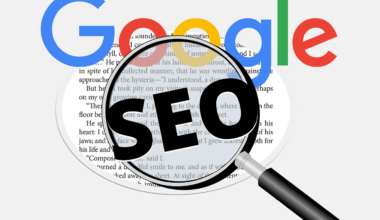Disability has continuously been an issue of global health importance as well as human rights and development priority because people living with disabilities are consistently faced with challenges throughout life (World Health Organization2014). Remarkably, people with disabilities do not have good access to services required for their daily life due to strong discrimination against them.
The apex of all is that social discrimination or stigmatization continues to take its course on individuals with intellectual and other forms of disabilities. They are often ascribed with many socially discriminating as well as demoralizing names such as ‘disabled person’, ‘crippled’, ‘blind’, ‘omo omi’ (a child gifted by water), deaf, dumb and many others that I would not be permitted to mention. Why not ‘visually impaired’ instead of the ‘blind’ or a person living with a disability instead of a disabled person or “person with speech disability” instead of ‘dumb’?
In addition to this stigmatization, written and oral have shown individuals with disabilities have poor access to health care, financial, educational services as well as employment opportunities. The discrimination against them is such that they are poorly represented in many sectors of the economy. Likewise, the basic facilities and services required for daily living have not been structured in ways that would allow access and use by these groups of individuals.
Although there are claims by many providers of different services that their services have been structured in ways to include people with disabilities, the obvious is that the aim has not been achieved. Let’s imagine that a visually impaired person needs to use an Automated Teller Machine (ATM) without a talkback or with a faulty one.
How is such a person expected to use the ATM without having to call on a third party? How are the person’s privacy and financial security be guaranteed? in the same vein, do we even think of how impossible it could be for a physically challenged to climb a five-story building all to attend an interview or access quality health care? The list is endless but we cannot mention all cases to reinforce our arguments.
From the time, we cannot dispute the fact that family, friends and other information are the secrets to the well-being of people with disabilities (WHO, 2011). Even though issues arise most of the roles of families to ensure that people with a disability also experience the full and equal enjoyment of rights as those without disabilities cannot be undermined (Verdonschot et al., 2009).
Yet, these individuals need an independent and discrimination-free life because caregiving by family members comes with a lot of costs on their which include loss of earnings, careers and pension entitlements, and physical and psychological health consequences. Thus, in addition to the role offered by the informal caregivers, society at large has a huge role to play in this regard to ensure independent living.
In summary, making efforts to make these available not only provides people with disabilities an independent and happy living but also prevents them from all forms of discrimination.
Remarkably, independent living is a general concept agreed upon by the people with movement as a response to experiences of exclusion (Tarrant, 2019). Its main aim is to ensure that the disabled have the same right and opportunities as their non-disabled peers (Tarrant 2019). In other words, it seeks to ensure that the disabled are in control of their own lives, able to pursue their ambitions and live in the places of their choice with the people of their own choice.Failure to promote this independent living for persons living with a disability can make them entirely dependent on their family members, thus, serving as a hindrance to their economic and social participation, likewise caregivers.
To promote independent living among persons with disabilities, the following should be done:
- Acknowledge the fact that people with disabilities are humans like us:
This is very important because we would not get it right if we continue to see them as other creatures, they are humans and they deserve to be treated like one. No discrimination or stigmatization against them. They should have equal access to what an able-bodied person would too. - Acknowledge the fact that this group of individuals do have a lot of talents just like any abled person does. There are exceptional instances when individuals with disabilities display unique talents better than an abled person. One recent example is that of 18-year-old autistic Emmanuel that makes lovely creative artworks and designs. A similar case of one visually impaired over 40 years old Mr Lawal that can create lovely items like flower vases and key holders with beads has been reported in the past. Another story of a visually impaired Mr Fatai that writes creatively has been equally reported. Thus, we must acknowledge the fact that they are humans with a lot of abilities. No wonder the popular saying that “ there is ability in disability”
- Encouraging them to live and discover their strength
This should be done by having a cordial relationship with them, engaging them in an n discussion, studying them and what they can do best and how best they can achieve them. - Ensuring inclusive access to facilities, services and opportunities.
Providing people with disabilities access to an inclusive environment includes making available everything that makes independent living easy for them. For instance, making assistive technology affordable and accessible to them. Assistive technology is any service that improves the ability of persons with disabilities to live independent and productive lives. Digital technologies have a great impact in empowering patients to conveniently manage their health. Examples of such innovation include The Big White Wall, which was designed to assist individuals with intellectual disabilities in managing their mental health and wellbeing by allowing them to anonymously gain access to peer support and professional therapeutic sessions (NHS England, 2015). Other examples include specialised elevators, transport products (such as wheelchairs with devices attached to them, prosthetic devices such as artificial limbs and eyes, and hearing aids. (British Assistive Technology Association, 2013).
Assistive devices display great potential in supporting individuals with all forms of disabilities. For instance, wearable devices such as wristwatches, electronic clothes and smart glasses can assist in monitoring an individual’s activities at all times without interruption and disturbance (Haghi et al., 2017).
In addition to assistive devices, some simple ways a disability-inclusive environment can be provided includes:
- Ensuring the doorways are spacious enough to accommodate physically impaired people using wheelchairs or mobility scooters.
- Making alternative passages with ramps instead of staircases to ease access of a user of mobility scooters.
- Designing toilet facilities in ways that can be easily accessible by people with disabilities.
- Keeping fire alarms within the rich of people with physical disabilities.
In summary, making efforts to make these available not only provides people with disabilities an independent and happy living but also prevents them from all forms of discrimination.






